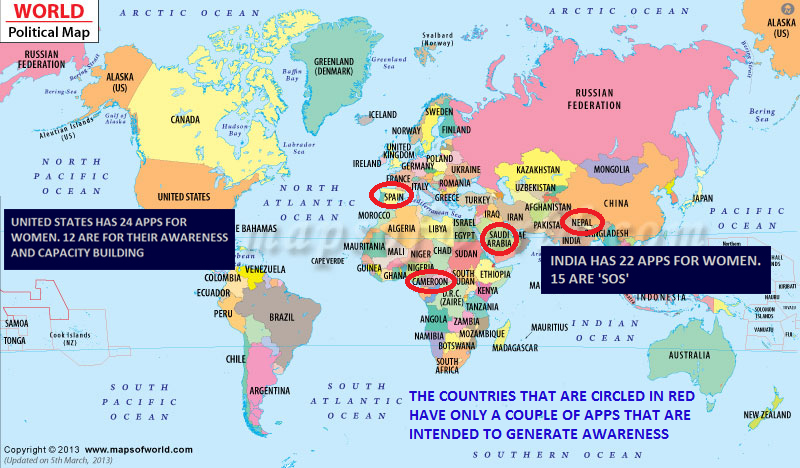While researching on harnessing the power of technology for women’s safety; I came across the story of 20 year old Morgan Ingram who was murdered by her stalker in the year 2011. Her loved ones have made their lives’ mission to generate awareness so what happened to Morgan does not happen to anyone else. This is grief for me because lives are changed incalculably. One has to move on and talk about it so that healing can set in. As a woman, what does this mean to me? Should I know more about what can happen to me? May I be more ambitious and critique the nature of awareness? In the context of technology, the fact that there are apps for the police to reach me is not comforting. It is not even reassuring. Therefore my question is, “Are Apps the answer?” I don’t want to be a dampener on the new-found love of technology in a country where internet access is 21 percent. At a recent Facebook conference that was hosted to promote women entrepreneurship and use of technology; the leaders emphasized upon not stressing over having an app for one’s business venture. That was business, this is life. Personally, I have a problem with ‘App-i-titis’ and I have a problem that most of the Apps in India are damage control oriented. I had a look at all the apps that are made for women, around the world (UK-AID and The Asia Foundation’s App Inventory, Jan 2017). They are creative but what they are addressing cannot be achieved through apps.


India has 22 Apps for women. 15 are Save-Our-Souls (SOS), 5 are of awareness generation and 2 of those are to facilitate police in evidence collation. For me as a woman, the translation is, “Things will go wrong because you are perpetually vulnerable. But don’t worry, we will get there faster. Hopefully at the time the act is ongoing. That way, catching the culprit is easier. As for other legalities… well an app does not cover rights for women, trauma management of the victim and improving a defunct legal system. Now don’t you go and criticize us! At least we made an app.”


The world is not doing any better. United States has 24 Apps for women. 12 are for awareness generation and capacity building of the women. Since men have an option to not download the app and because women will have to worry about themselves, this works just fine. The remaining apps in the States are SOS (7), ease of evidence collation for police (4) and call-to-action (1). Countries like Kenya, Cameroon, Nepal, Malaysia and Saudi have one app each about awareness generation.
United Nations ‘Facts and Figures: Ending Violence against Women’ (2015), places Tonga right at the top for 77 percent prevalence of physical violence against women (2009). This is followed by Fiji (69 percent, 2011), Democratic Republic of Congo (64 percent, 2007), Equatorial Guinea (63 percent, 2011), Uganda (60 percent), and Austria (57 percent). I could not locate presence of apps in those countries through Google. If there are apps, how much can they help?
Daily financial need based apps are the ones I install and use without uninstalling. I have an app for ‘Call-a-cab’, E-money which acts as petty cash and some commonly used social media apps. For me and many others, apps ease common and repetitive tasks. For more serious things in life, we have to be shaken up through popular media outreach and made to do some personal investment into the task. Apps don’t work for my dignity and Right to Freedom. There are also no apps for Respect. (This is putting to rest a stale Facebook joke.)
The Director of Centre for Social Research, Dr Ranjana Kumari had this to say on this matter. “By itself, technology is neutral. Its effectiveness is gauged by how smart is the system around it. Safety apps are not useful unless the backend linkages are in place; for instance, efficient policing, surety and swiftness of action. Ironically, some of the apps are also known as ‘Panic Button’. In my opinion apps induce panic and fear instead of placating the woman and preventing the situation.”




